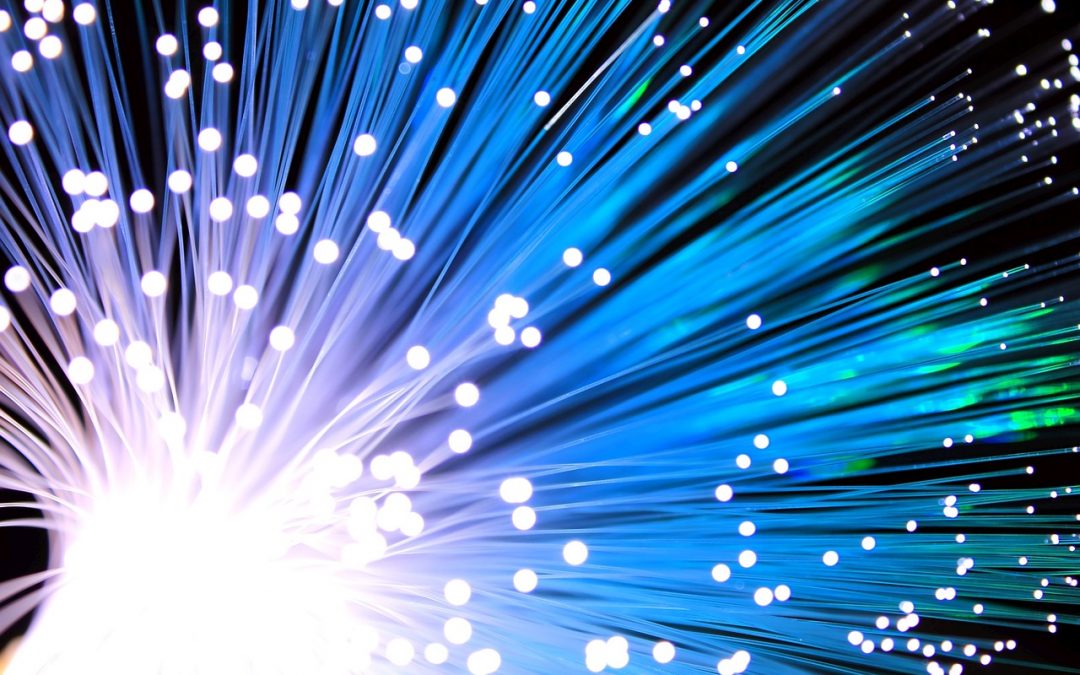The world is currently experiencing a golden age of technology.
Yet, this technology has undergone many developments in recent years.
With so many people now desiring access to television, the old way of delivering signals via copper coaxial cables is quickly becoming outdated.
In this article, one of the most progressive ways of transmitting information is discussed. In particular, a brief overview of fiber optic cables is given, explaining how they came into being and how they work. Then, the connection between these cables and cable television is discussed.
Towards the end of the article, the benefits of these connections are emphasized as well as some of the drawbacks of these connections.
An Overview of Fiber Optic Cables

Fiber optic cables are made of thin strands of glass or plastic that transmit beams of light. These beams of light carry information from one location to another, making communication extremely easy.
These strands are about a tenth as thick as human hair, allowing many of them to fit inside a cable. Yet, a fiber optic cable can have as few as two strands, as the efficiency of these strands still allows you to transmit many signals at once.
For example, a single strand can carry about 25,000 telephone calls at once. This means that some cables can carry millions of phone calls at once. This number is only increasing as engineers find ways of maximizing the efficiency and number of strands in a cable.
When light travels down these cables, each photon bounces off the walls of the cable. Within each cable, there is a core and a cladding. The core is located in the middle of the cable while the cladding is located on the outside of the core, wrapped around it to keep the various signals contained inside the cable.
The strands that make up the cable can be either plastic or glass. The cladding is usually made of a different type of material than the core, as this allows it to have a lower refractive index. This increases the efficiency of these cables and prevents noise interference and signal disruption.
Types of Fiber Optic Cables
There are two main types of these cables. In particular, there are single-mode cables and multi-mode cables.
Single-mode cables have a very thin core, allowing signals to be transmitted straight down the middle. Cable TV, internet, and even telephone signals are transmitted using single mode cables, as this form is quite efficient at distributing information over long distances.
Multi-mode cables have much larger fibers than the fibers in single-mode cables. This makes them more ideal for transmitting information over a short distance. For example, multi-mode cables are often used to connect computer networks. The larger diameter of each fiber in multi-mode cables allows light to travel in many different modes, hence the name of this cable.
The Connection to Cable Television

Television broadcasting has historically been based on radio waves that travel through the air to antennas.
Nowadays, however, fiber optic cables are increasingly being used to transmit information from the television broadcaster to the viewer.
When this transition from radio waves to cables first took place, coaxial cables coated in copper were used. Eventually, this method was realized as inefficient and unable to support a large population.
Thus, scientists and engineers came up with a new method of transferring information over a cable. In fact, one of the initial pioneers, Charles Kao, was awarded a 2009 Nobel Prize in Physics for his work in this realm.
Optical fibers are able to transmit information near the speed of light, which makes them incredibly efficient.
Several providers currently offer fiber optic television, including AT&T and Frontier.
This kind of television connection delivers better clarity of sound and picture and more channels. Fiber optic television packages are often more customizable, allowing viewers to choose exactly which channels they want. This allows you to minimize your television costs.
The Benefits of Fiber Optic Cables

There are many benefits of these cables that will be highlighted in this section.
Fiber optic cables minimize the crosstalk that can occur between copper cables. This crosstalk can result in poor signal quality, which can be absolutely devastating if you rely on some television program. Fiber optic cables rarely experience this crosstalk, making them very reliable.
Furthermore, these cables are also much cheaper to maintain, as information can travel quite far through this method before needing any kind of signal booster. These signal boosters can be expensive, making fiber optic cables ideal for minimizing operating costs.
Some companies even choose to establish their own fiber optic network, which maximizes their bandwidth capacity. Alternatively, a company might choose to purchase space on a private fiber optic network. Either route is significantly more efficient than using telephone lines or ethernet cables to connect computers in a network.
It seems that the world is moving towards these cables as the preferred means of connection. In this sense, this connection is advantageous because it’s becoming so ubiquitous. If you choose to avoid these cables, your current connection could degrade, as there might not be much support for other cables in the future.
On the other hand, as more people invest in fiber optic networks, everyone benefits, as less compressing and decoding is needed in order to transmit signals. This network effect is critical for the efficiency of fiber optic cables. Eventually, a tipping point will be reached in which it no longer makes sense to use anything but these kinds of cables.
Lastly, these kinds of cables transfer data in digital form, preventing the need to convert from analog to digital. This maximizes the quality of the signal and prevents information from being lost in the conversion process.
The Drawbacks of Fiber Optic Cables
While fiber optic cables offer many benefits, they also have some drawbacks that should be noted.
For example, since these cables are often made of glass, they can be quite fragile.
Electrical wires tend to be more durable in this regard.
This fragility also means that some chemicals can negatively impact the efficiency of these cables. For instance, some underwater cables have been known to be compromised by hydrogen gas.
This is not an unavoidable obstacle, though it does mean that more care should be practiced when dealing with these cables. This could actually make their maintenance quite costly, at least in the short term. Eventually, the proper techniques and technologies will be innovated to optimize the maintenance of these connections.
Furthermore, these cables are known for optimizing long-distance transmissions. Yet, this might lead to pushing the limits of these connections. Just because these connections are better than traditional copper cables does not mean that they are invincible.
At a certain distance, extra optical components will have to be added in order to prevent light dispersion. This could be costly and could require significant resources. This is not ideal, which means that improvements can still be made in this type of connection.
Final Thoughts on Fiber Optic Cables

Fiber optic cables certainly represent the future of information transmission.
Yet, eventually, they will become obsolete, as all information will be transmitted wirelessly. Wireless transmission would certainly be cheaper, as this kind of connection would not susceptible to physical damage and decay like fiber cables do. This means that there would not be as many repair costs associated with wireless connections.
In the same vein, this might also mean a loss of jobs in the short term, as an entire industry has been born centered around the installation and maintenance of wired connections.
Furthermore, wireless transmissions in the future will have different limits than fiber optic connections. This means that information will be transmitted much faster than the speed that fiber optic connections allow. Wireless connections are limited by the speed of light, as they use photons in order to convey information between sources.
In this sense, the future might be truly bizarre, as information could be transmitted the moment that it is requested. This means that the moment a need emerges, information could be delivered to satisfy that need.
Alternatively, it could mean that all of our future needs will be dissolved before they enter our consciousness, meaning that a totally novel kind of human experience could emerge in the future.
This reality might already seem to be incarnated, yet that’s only because of how fast modern cables are. In reality, information still takes some time to travel, even if that time is extremely minimized.
Last update on 2024-04-19 / Affiliate links / Images from Amazon Product Advertising API







